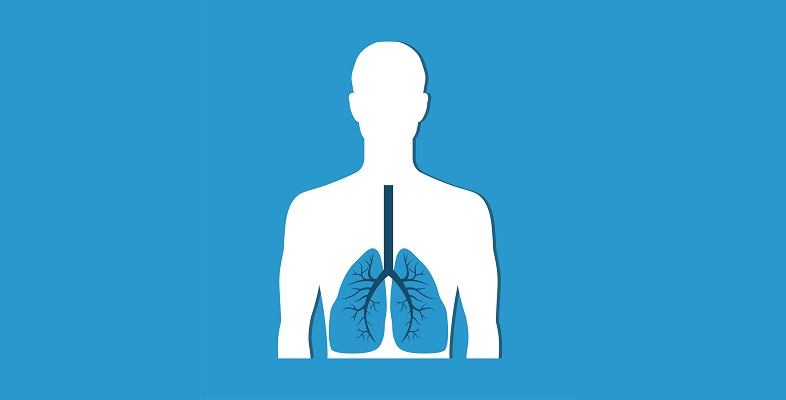3.2 Lung function impairment
When lung function is impaired, the PEF, FEV1, FVC and FEV1/FEC values can be used to help determine the cause of the dysfunction; for example, decreased lung volume due to fibrosis or increased airway resistance due to asthma.
Activity 7 Spirometry experiment
In this activity, you will use the spirometer application in the Open Science Laboratory to measure changes in FEV1/FEC over time between smokers and non-smokers. Here's the link to the application – open it in a new window or tab, so you can return to this page easily.
- Link to Spirometer application [Tip: hold Ctrl and click a link to open it in a new tab. (Hide tip)]
Before you begin collecting data, watch the video in the Introduction tab of the spirometer to familiarise yourself with the application.
Research studies that look at relationships between different groups of people can be categorised into cross-sectional or longitudinal studies. Cross-sectional studies compare different groups of people at one moment in time. Longitudinal studies analyse the same group of people across different points in time.
Now go to the Spirometer tab in the application and set the following parameters:
- age: 20
- male
- height: 180 cm
- non-smoker
- Start the measurement and record the output of the FEV1, FVC and FEV1/FVC (%) using the ‘Record data’ button. Repeat this measurement three times, remembering to record the data each time.
- Repeat the data collection for the same male individual at ages 40 and 80. Repeat both measurements three times, remembering to record the data each time.
- Then select the same parameters for age, sex and height, but choose ‘smoker’. This group smoked one pack of 20 cigarettes each day from the age of 20. Collect data for three ages – 20, 40 and 80 – repeating and recording the measurement three times.
- Select the ‘Export data’ button then copy and paste the results into a spreadsheet program such as Excel.
- Determine the mean (average) of the three values that you collected of FEV1/FVC (%) at each age for the non-smoker and smoker conditions.
- Plot a computer-generated x–y graph showing the mean FEV1/FVC (%) of the smoker and non-smoker at 20, 40 and 80 years of age. Make sure to plot this in chronological order.
